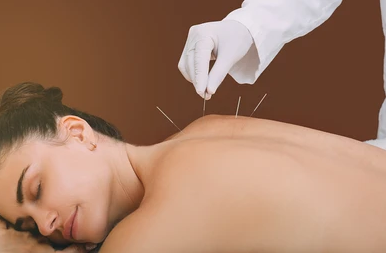The Difference Between Acupressure and Acupuncture
The Difference Between Acupressure and Acupuncture
Within the realm of holistic healing practices, two ancient methodologies—acupressure and acupuncture—have emerged as profound means of restoring well-being and balance. While both are deeply rooted in traditional Chinese medicine, they diverge in their techniques, methods, and how they interact with the body's intricate energy pathways. Unpacking the nuances that set acupressure and acupuncture apart sheds light on the unique advantages each modality offers.
The Essence of Acupressure: At the core of acupressure lies the art of applying calculated pressure to specific points along the body's surface. Utilizing fingertips, hands, or specialized devices, practitioners target these acupoints, which coincide with energy meridians. The purpose of acupressure is to facilitate the flow of vital life force, known as Qi, through these meridians, fostering equilibrium in the body's energy dynamics and awakening its natural healing mechanisms. An inclusive approach, acupressure can be practiced independently or with guidance from a trained practitioner.
The Craft of Acupuncture: Conversely, acupuncture employs the delicate insertion of fine needles into the body's acupoints to instigate energy flow. While grounded in the same foundational principle as acupressure—manipulating Qi to reinstate equilibrium—acupuncture employs needles to unlock energy pathways, ameliorate imbalances, and alleviate ailments. The sensation accompanying acupuncture is typically minimal, often described as a mild tingling or subtle pressure.
Crucial Disparities:
- Technique:
- Acupressure revolves around manual pressure, utilizing hands, fingertips, thumbs, or specialized instruments to activate acupoints.
- Acupuncture engages fine needles, strategically placed in acupoints to elicit energy circulation.
- Sensation:
- Acupressure is largely painless, with the primary sensation being the tactile pressure exerted on the acupoint.
- Acupuncture may cause slight discomfort or tingling as needles are introduced, yet seldom does it induce significant pain.
- Application:
- Acupressure offers autonomy, empowering individuals to self-administer or receive it from practitioners without necessitating specialized apparatus.
- Acupuncture requires the expertise of a trained acupuncturist due to the use of needles and the precision required for their placement.
- Accessibility:
- Acupressure promotes accessibility, readily embraced as a self-care method or shared among peers.
- Acupuncture mandates the intervention of a proficient practitioner and is frequently practiced within clinical settings.
- Scope:
- Acupressure finds its footing in stress alleviation, relaxation, pain management, and holistic wellness promotion.
- Acupuncture's versatility is evident in its application to a wide spectrum of conditions—ranging from chronic pain and fertility concerns to digestive disturbances and emotional imbalances.
Navigating the Path Ahead: Selecting between acupressure and acupuncture hinges on personal comfort, health objectives, and inclinations. Acupressure extends a gentle and approachable avenue toward well-being, fostering empowerment and self-healing. Conversely, acupuncture offers a more refined, potent approach—ideal for tackling intricate health issues. Whether via acupressure's tactile connection or acupuncture's meticulous stimulation, both methods leverage the body's inherent ability to recalibrate and enhance vitality.
In Conclusion: In the grand tapestry of holistic wellness, acupressure and acupuncture emerge as distinct threads interwoven by the hands of time. As individuals embrace these practices, they unlock the body's innate potential for equilibrium and healing. The choice between acupressure's tactile dance and acupuncture's subtle intervention reflects the tapestry of individual preferences, demonstrating that whether through touch or needle, we engage with the magnificent symphony of energy that resides within us.

















No comments